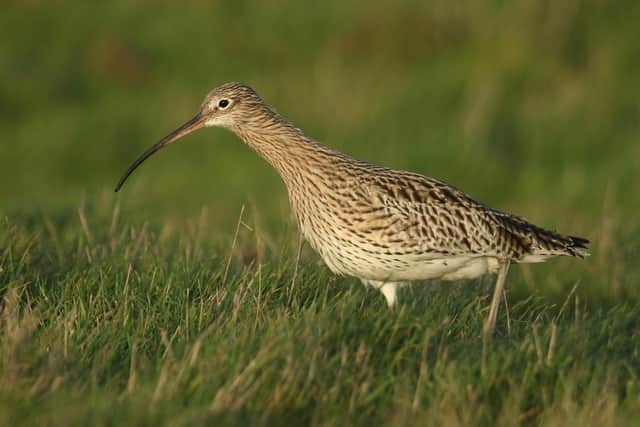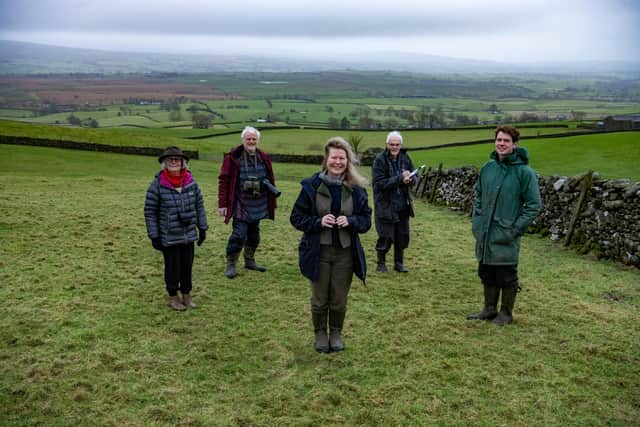Curlews: The detectives on the trail of declining wading birds in the Yorkshire Dales
Between 1995 and 2020, some 48 per cent of curlews and another wader, lapwing, vanished for reasons which are as yet unknown.
Now group of bird detectives is keen to find out why. Volunteers and a number of farms in and around Clapham in North Yorkshire are determined to investigate.
Advertisement
Hide AdAdvertisement
Hide AdFirst, they have to carry out what is in effect a bird census. Before they can start to save them, they have to calculate how many we have.


Sarah Smith of the Clapham Curlew Cluster said: “We have 15 farms and 18 volunteers going out and doing wader surveys in partnership with the Royal Society for the Protection of Birds.
“We need to find out how many waders we have. Curlew is the name we are using because they are so iconic but this is about all waders.
“We have problems with lapwings now. We have lost 48 per cent of both curlews and lapwings between 1995 and 2020.
Advertisement
Hide AdAdvertisement
Hide Ad“So we need to find out what we have on the farms in this area so we can know what measures to put in to put in to try and protect the nests.


“The south of England only has 500 breeding pairs left. In Northern Ireland there are only 100 breeding pairs left.
“And if we are not careful, we will wake up in the north of England which is one of the last strongholds and find we are in a similar situation.”
The Yorkshire Dales Millennium Trust is on board too. It has made a grant which means payments of £500 are available to farmers to leave an acre around a nest unmowed.
Advertisement
Hide AdAdvertisement
Hide AdMs Smith said: “Often they are in silage fields or hay meadows. That is one measure which is really important.”
Schools are also taking part. Primary schools in Settle and Kirkby Malham have sent pupils to Hill Top Farm in Malham to learn more about these birds and how farmers can farm in a “curlew-friendly way”.
The children have created textiles, drawings, posters and poems to help raise awareness and exhibitions are planned in Hawes, Settle, Kirkby Malham and Clapham.
It comes reports of hope in Northern Ireland.
The curlew enjoyed a bumper breeding season last year, prompting conservationists to suggest there is hope for the declining wader.
Advertisement
Hide AdAdvertisement
Hide AdIn the Antrim Hills, measures such as placing electric fencing around nesting sites resulted in 55 chicks fledging last summer. Meanwhile, in County Fermanagh, some 43 breeding pairs were recorded across the RSPB's Lower Lough Erne reserve and on adjacent land.
A "bespoke habitat" for curlews and lapwings will include anti-predator fencing and new pools and at Gallows Bridge Farm, Buckinghamshire.
Berkshire, Buckinghamshire & Oxfordshire Wildlife Trust is carrying out the work with a grant from the FCC Communities Foundation.
Comment Guidelines
National World encourages reader discussion on our stories. User feedback, insights and back-and-forth exchanges add a rich layer of context to reporting. Please review our Community Guidelines before commenting.
